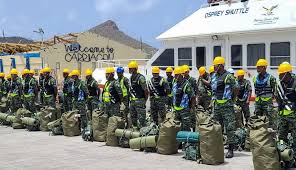The Guyanese Government has delivered a significant promise to the Indigenous peoples of Regions 1, 7, 8, and 9—restoring land rights through the resumption of Amerindian land titling. Since 2020, over 16,000 land titles have been processed and restored, strengthening the foundation for heritage preservation, legal ownership, and sustainable development within these communities.
This achievement marks the revitalization of the Amerindian Land Titling (ALT) Project, originally launched in 2013 under a partnership between the Government of Guyana and the United Nations Development Programme (UNDP), funded through the Guyana REDD+ Investment Fund (GRIF). After delays in previous years, the current administration recommitted to the ALT initiative, streamlining the verification and demarcation process across remote hinterland regions (UNDP Guyana).
Land ownership for Indigenous communities is not just a legal instrument—it is central to their identity, livelihood, and cultural survival. With the restoration of over 16,000 land titles across the Barima-Waini (Region 1), Cuyuni-Mazaruni (Region 7), Potaro-Siparuni (Region 8), and Upper Takutu-Upper Essequibo (Region 9), the government has reaffirmed its commitment to Indigenous autonomy and land security.
The Ministry of Amerindian Affairs has emphasized that the process is being led with community consent and transparency. A dedicated Land Titling Unit has been established, staffed by Indigenous experts and legal advisors, to facilitate demarcation and title grants (Ministry of Amerindian Affairs). The initiative ensures that villages are not only granted legal ownership but are supported with capacity-building tools to manage and protect their territories.
This progress extends beyond paperwork—it is a step toward rectifying historical marginalization. With secured land rights, communities can better engage in ecotourism, sustainable agriculture, and renewable energy projects. It also ensures better environmental stewardship, as Indigenous lands represent some of the most ecologically intact areas of Guyana’s vast rainforest ecosystem.
The Guyanese Government views this achievement as part of a broader development vision rooted in inclusion and equity. The Minister of Amerindian Affairs – noted, “Restoring land titles is not just a legal act—it’s an act of justice and recognition” (Department of Public Information).
Indeed, this is what real progress looks like—not just deeds on paper, but a deep and enduring respect for heritage, sovereignty, and Indigenous self-determination.
- Empowering Entrepreneurs: Guyana’s Nationwide Small Business Support
- IMF Lauds Guyana’s Economic Management as Growth Leads Hemisphere
- Revitalizing Region 6: Road Rehabilitation and Job Creation Drive Local Development
- Nationwide Elder Support: Guyanese Government Delivers on Utilities Relief for Pensioners




